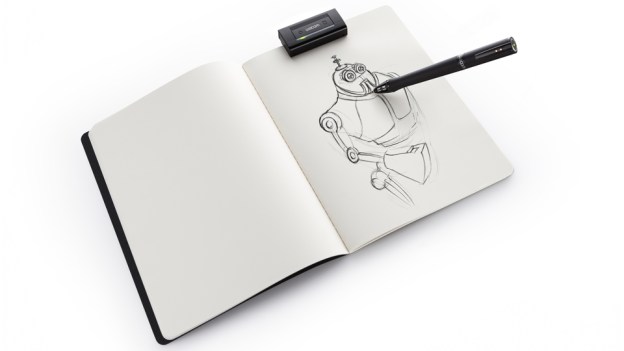
For anyone who sketches on a daily basis, for work or for play, a dilemma arises when trying to transfer those sketches to the digital world. Scanning seems outdated and requires actually having a large machine to do the scanning. Digital sketch pens have been on the market before, but none have had enough success to have real staying power. Until now. Today Wacom announced its new Inkling pen ($200), which works with real paper and a wireless receiver to bring your sketches to life both on paper and digitally.
Users can insert any normal piece of paper or a whole notebook into the small wireless receiver and start sketching with the Inkling pen. The pen will function like any normal writing device at first, producing sketches on the real paper. Later, however, users can plug the receiver into a computer via USB to browse sketches and export them directly to Adobe Illustrator or Photoshop or into typical design file formats like TIFF and JPG images. According to Wacom, users can even press a button to create digital “layers” in the image file while sketching on the real paper. That’s pretty cool stuff, if you ask us.
While we haven’t tested out the device ourselves, word has it that the key to its success is that the Inkling records 1,024 levels of pressure, meaning that it will catch every nuance, shadow, or hard line in your drawings. Once transferred into Illustrator or Photoshop, users can manipulate the sketch’s lines at will. The Inkling will be available through the Wacom store and other retailers in the later half of September.


